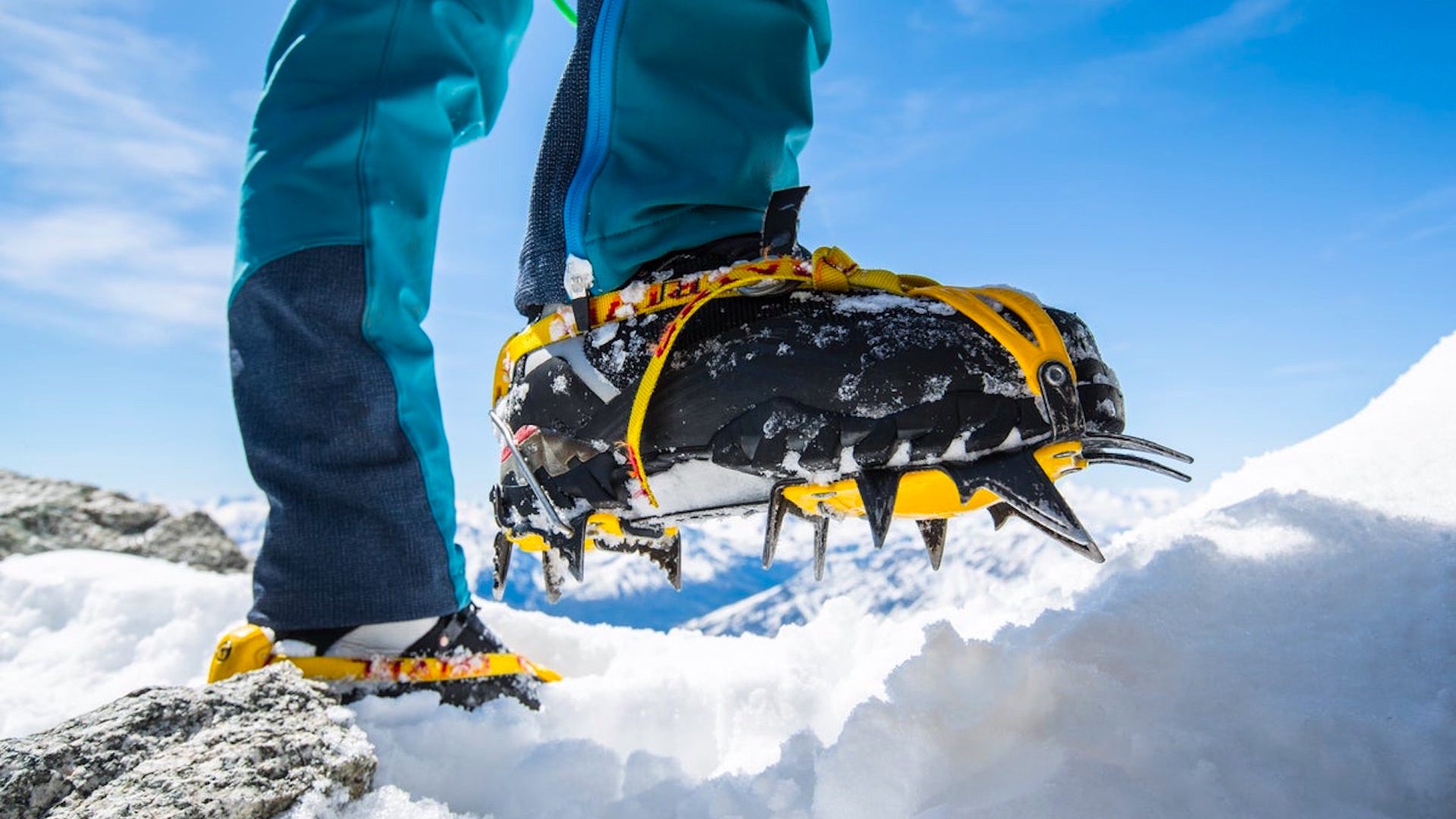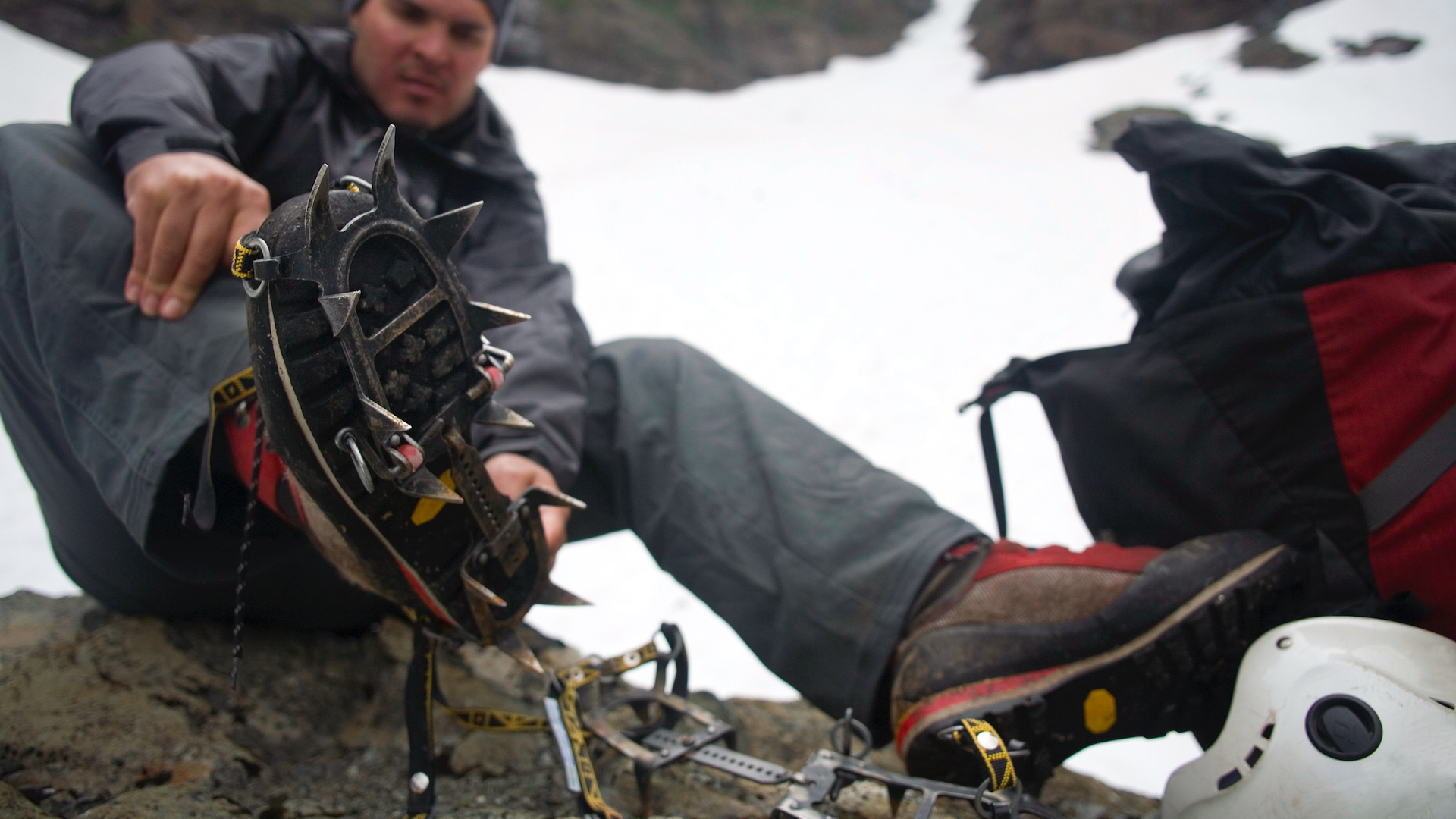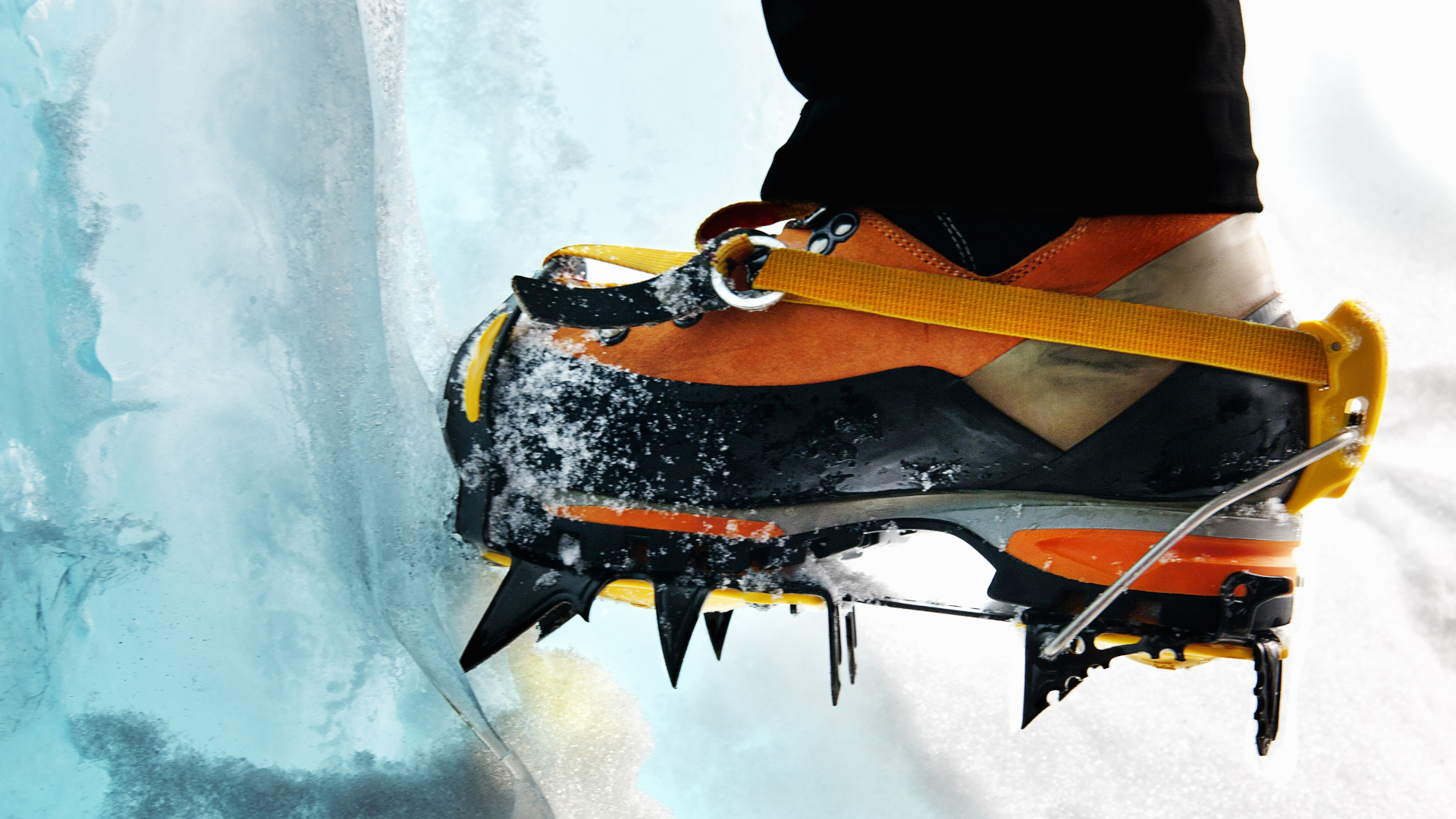How to sharpen crampons
If you’ve noticed that your traction isn’t what it used to be or your crampon teeth are starting to look more rounded than sharp, it’s time to sharpen up

Marching across a sparkling glacier on a sunny day, kicking your crampons into the crunchy snow with each step is one of the most rewarding winter adventures you can have, but those crampons can take quite a beating. With time and use, the teeth of your crampons will dull – more so with heavy use if you’re ice climbing – making them less effective, which can make it hard to hike and even put you in added danger.
If you’ve noticed that your traction isn’t what it used to be or your crampon teeth are starting to look more rounded than sharp, it’s time to sharpen up. Not a DIY fan? Don’t worry, sharpening crampons is much easier than caring for other winter gear care like tuning and waxing skis. It doesn’t take much time or require much equipment, and will make your winter adventures even better. Read on for how to sharpen crampons to make sure you get the most out of your snowy pursuits this season.

What you need to sharpen crampons
Sharpening your crampons doesn’t require much equipment and you may find you have most of these items already:
- Two rags
- Protective work gloves
- A Mill Bastard File
- A well-lit workspace
How to sharpen crampons
Once you've gathered your tools, follow these easy steps to get your crampons back in fighting shape.
1. Clean your crampons
Before you get started, you’ll want to clean your crampons to remove any dirt or debris that they’ve picked up on your adventures. This only takes a minute, but it’s an important step that if you miss could lead to uneven sharpening.
Run your crampons under colder water to rinse them, then take a wet cloth and wipe off the teeth. Dry them with a rag before moving onto the next step and keep the rag nearby.

2. Ready your workspace – and hands
When you’re ready to sharpen your crampons, choose a work surface that is well-lit where you can stand up – don’t use a table that you don’t want to get scratched or marked up. A workstation in your garage is perfect, and it’s helpful to use a spot lamp so you can see what you’re doing. Wear some sturdy work gloves to avoid cutting your fingers, and grab your file and crampons.
All the latest inspiration, tips and guides to help you plan your next Advnture!
3. File the crampon teeth edges
Hold the first crampon in one hand and place it on its side edge with the teeth facing away from you, using the work surface underneath to keep it steady. Use the file to sharpen the edges of the crampon teeth only – you don’t need to sharpen the flat sides.
Move the file away from you as you work, and run it from the base to the point of each tooth until the point tapers to a fine tip and feels sharper. For ice climbing, you’ll want to get the teeth as sharp as you can, but you don’t need them quite as sharp for mountaineering and glacier trekking. Sharpen every tooth on each crampon.

4. Clean up
When you’re finished, use the dry rag to wipe the crampons free of any metal shavings, then use a dustpan and brush or vacuum to clean up your work surface and dispose of the shavings.
5. Store your crampons
If you aren’t using your crampons immediately, place them in their protective case or cover the teeth with rubber point covers. Make sure your crampons are dry before storing them. If you’re storing them away for an extended period, apply a little oil or WD40 to the metal teeth to keep them from rusting.
Julia Clarke is a staff writer for Advnture.com and the author of the book Restorative Yoga for Beginners. She loves to explore mountains on foot, bike, skis and belay and then recover on the the yoga mat. Julia graduated with a degree in journalism in 2004 and spent eight years working as a radio presenter in Kansas City, Vermont, Boston and New York City before discovering the joys of the Rocky Mountains. She then detoured west to Colorado and enjoyed 11 years teaching yoga in Vail before returning to her hometown of Glasgow, Scotland in 2020 to focus on family and writing.

